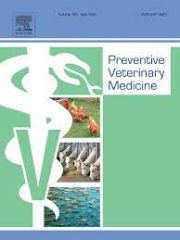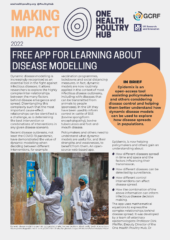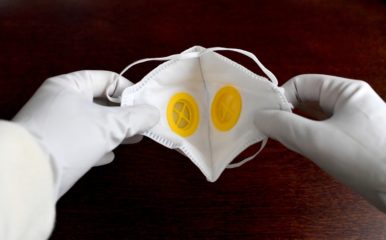
Data crunching for infectious disease strategies
Published on 21/07/2022

possessed photography/unsplash
 This blog focuses on the ZOODLE word ‘MODEL’.
This blog focuses on the ZOODLE word ‘MODEL’.
Science fiction literature and movies offer many stories in which artificial intelligence (AI) has developed to astounding levels and highly intelligent machines have become commonplace. There, machines are often indistinguishable from actual humans, not just in terms of physical appearance, but also because of their remarkable cognitive skills.
This is fiction, of course, and androids are not walking among us. Yet, AI permeates our lives and intervenes in a wide range of tasks, from voice recognition to self-driving cars and distinguishing Chihuahuas from muffins.

But how does AI manage to accomplish these feats?
The short answer is that successful machines are good at doing just the one thing: digesting loads of data (e.g., images of muffins and Chihuahuas) and learning any patterns hidden in within (e.g., the distinctive traits of muffins and Chihuahuas). In other words, machines filter out uninformative details that are not helpful towards solving a specific task and learn a simplified, yet effective, representation of the world.
That representation is a model.
Making sense of data
Scientists, a bit like machines, strive to formulate models of real-world phenomena. The underlying philosophy is similar: scientists observe phenomena through the lens of data, and because data is complicated, noisy and potentially biased in not-always-clear ways, they need to find a way to make sense of it.
Hence scientists resort to abstract, simplified models of a phenomenon. This helps them reason about observed patterns.
Such models are not fuzzy entities, but rather precise constructs formulated in terms of mathematical and logical statements – and this makes scientific models quantitative, rigorous, explicit in their assumptions and open to scrutiny.
One major difference between scientific models and machines lies in their purposes: machines typically focus on solving some practical task, whereas scientists are, in the main, concerned with improving our understanding of real-world phenomena.
Describing nature
Scientists have been pretty good at this. In fact, we now have access to models that accurately describe nature at all scales, from subatomic particles to stars and beyond. Weather forecasting models in particular represent a remarkable scientific success, testifying our ability to tame even chaotic phenomena.
Infectious disease dynamics represents another scientific setting where mathematical models play a fundamental role.
As said, interpreting data (and particularly epidemiological data) is not always a straightforward task. It is often the case that the same data are compatible with multiple explanations, i.e., different potential mechanisms can lead to the same observation.
Uncertainty and public health
Such uncertainty can be a problem in a public health crisis, for example at the onset of an outbreak, when difficult decisions need to be taken and different interpretations may suggest different courses of action.
In such contexts, models are not a panacea. However, they do provide a principled approach to navigate uncertainty and discuss potential alternatives. At the time of writing, for example, cases of monkeypox, a disease typically found in West and Central Africa, are being increasingly reported worldwide, but it remains unclear whether this outbreak is self-sustained or not.
Nowadays, mathematical transmission models are routinely incorporated in outbreak responses and contribute to advising public health policies.
One Health
One Health is another setting that benefits from epidemic modelling, by virtue of its collaborative and interdisciplinary essence. One Health views human health as being indissolubly related to animal and plant health and to the environment. In the case of emerging and re-emerging zoonotic pathogens, One Health focuses on the interface between humans and potential pathogen reservoirs, as that is where epidemic risk (for example cross-species spillover) concentrates.
The One Health Poultry Hub’s activities revolve around the interface between people and domestic poultry and aim to improve human and poultry health as well as the sustainability and safety of the poultry sector in developing countries. In this context, mathematical modelling efforts are directed at a better understanding of the structure of the poultry industry, as well as the extent of biological hazards.
Ongoing modelling work within the Hub involves, for example, mapping the distribution of poultry farms from limited observations, as well as characterising ‘fluxes’ of chickens from those farms to poultry markets.
The Hub also aims to implement a unified computational framework to simulate poultry movements at a granular level as well as disease transmission scenarios whilst leveraging the wealth of data collected by collaborators. Model outputs will help us to uncover epidemic patterns ‘hidden’ within biological data, including the genetic sequences of pathogens.
Combined modelling efforts will ultimately allow us to assess risky settings and behaviours linked to poultry handling, and contribute to this to inform strategies to reduce the burden of infectious diseases and other foodborne hazards.


